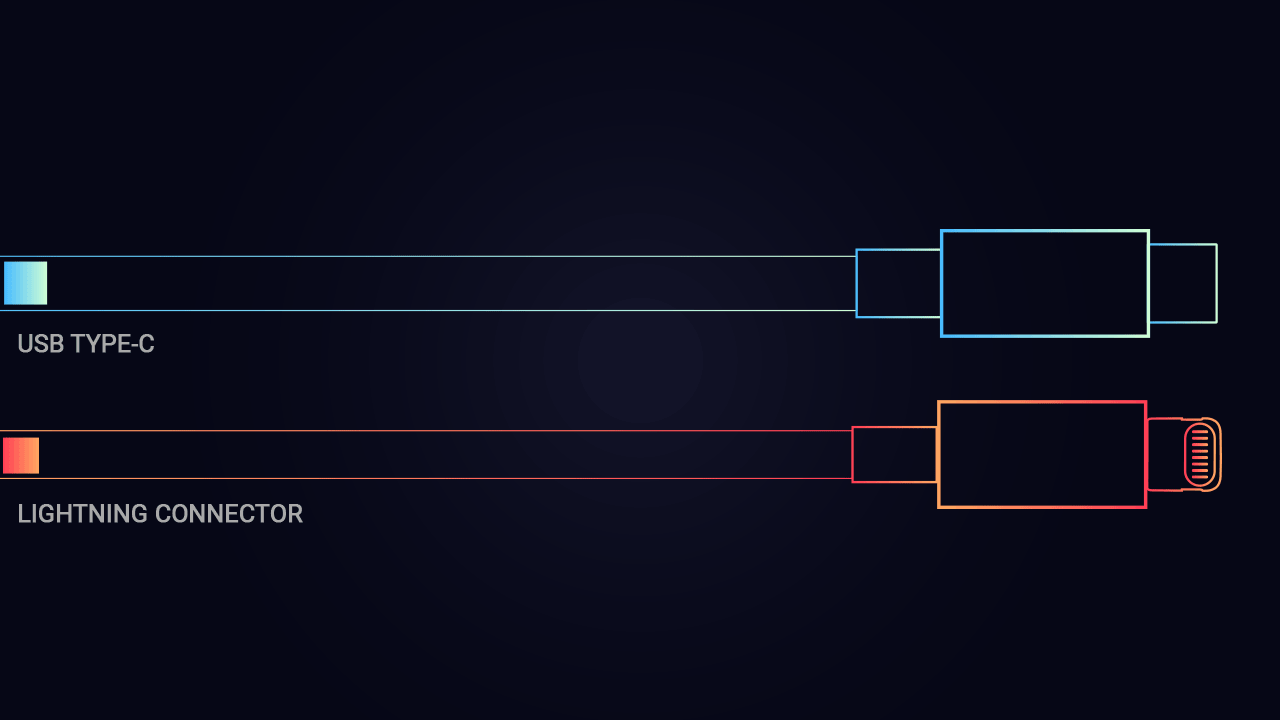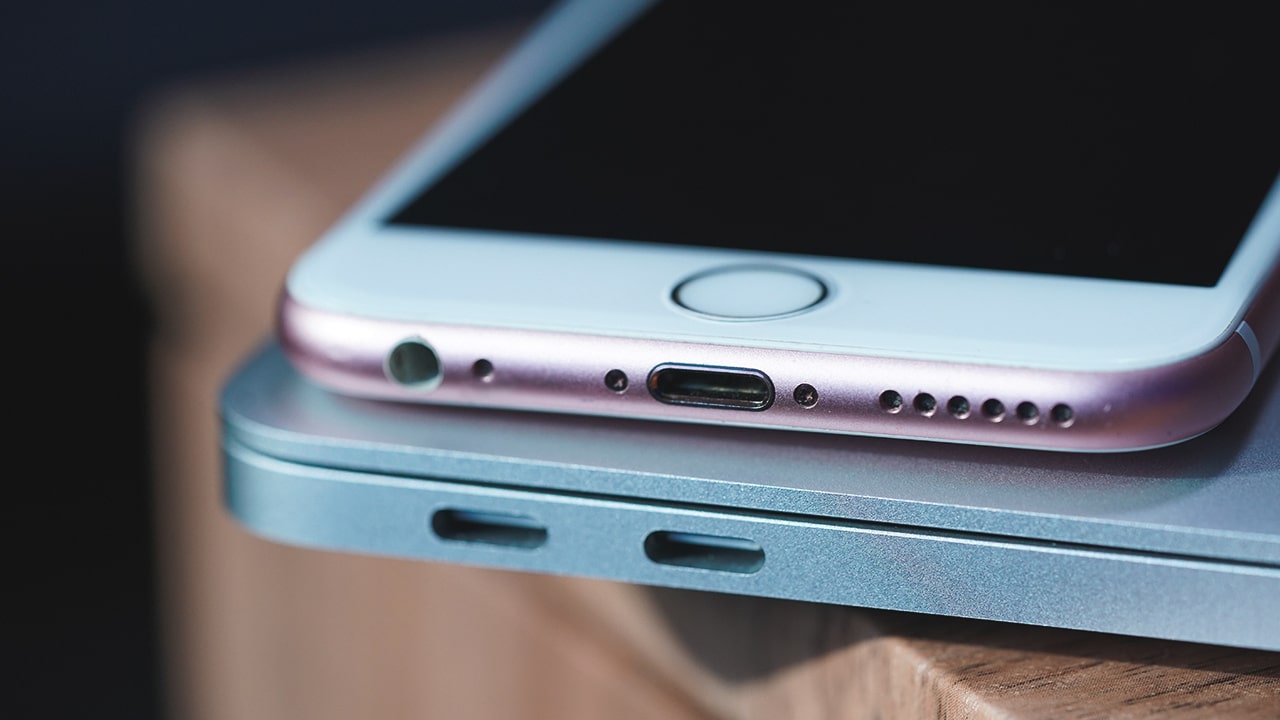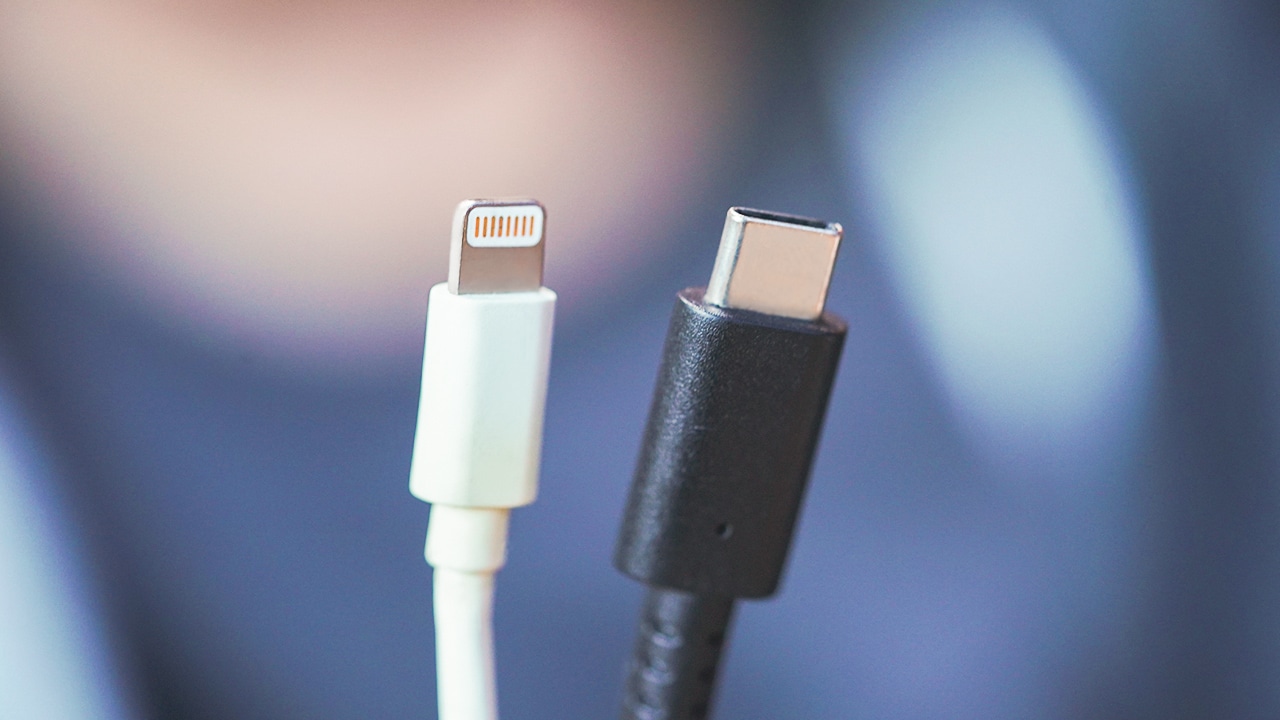USB-C vs. Lightning Connector: A Comprehensive Comparison
USB-C and Lightning are two popular connector standards used in
modern devices. While USB-C is a universal connector found in various
devices, Lightning is a proprietary connector exclusive to Apple
devices. In this article, we at Phonefix will compare the two connectors and explore
their similarities and differences.

USB-C: The Versatile Connector
USB-C, also known as USB Type-C, is a versatile and widely adopted
connector standard. It supports USB 3.1 and Thunderbolt 3 technologies,
offering fast data transfer speeds of up to 10Gbps or even 40Gbps with
Thunderbolt 3. USB-C is capable of delivering up to 100 watts of power,
making it suitable for charging devices as well. It is used in
smartphones, laptops, tablets, and other consumer electronics.

Lightning: Apple's Proprietary Connector
Lightning is a proprietary connector developed by Apple specifically
for their devices. It was introduced with the iPhone 5 in 2012 and has
since been used in various Apple products, including iPhones, iPads, and
iPods.

The Lightning connector features a smaller form factor and a reversible design, providing convenience to users. However, Lightning is not widely adopted outside of the Apple ecosystem.
Physical Differences
USB-C connectors have a symmetrical design, which means they can be inserted into a device in either orientation. This eliminates the frustration of plugging in the connector incorrectly.
On the other hand, the Lightning connector has a unique design with exposed pins and is only compatible with Apple devices.
It is important to note that USB-C and Lightning connectors are not physically interchangeable without the use of adapters or special cables.
Data Transfer Speeds
USB-C, when paired with USB 3.1 or Thunderbolt 3, offers faster data
transfer speeds compared to Lightning. USB 3.1 supports data transfer
rates of up to 10Gbps, while Thunderbolt 3 can achieve speeds of up to
40Gbps.

In contrast, Lightning initially offered speeds of up to 480Mbps, equivalent to USB 2.0. Although later versions of Lightning saw some improvement, it still falls behind the speeds provided by USB-C.
Power Delivery
Both USB-C and Lightning support power delivery, allowing devices to
be charged using the respective connectors. USB-C, with its higher power
delivery capabilities of up to 100 watts, is commonly used for charging
laptops and other power-hungry devices.

Lightning, while not as
powerful, still provides sufficient power for charging smartphones and
tablets.
The Lightning cable charging is faster than the old 30-pin cable. And, the newest iPhone 13 supports 20W fast charging, which charges your phone 50% in 30 minutes.

The USB-C cable can support fast charging up to 240W. Moreover, it is compatible with different fast-charging protocols, such as Power Delivery, QC, FCP, VOOC, or PE.
Device Compatibility
USB-C has gained widespread adoption and is supported by various manufacturers, making it compatible with a wide range of devices. It is used in smartphones, tablets, laptops, and other consumer electronics from different brands.
On the other hand, Lightning is exclusive to Apple devices and is not found on non-Apple products. Using Lightning accessories with non-Apple devices often requires adapters or specialized cables.
Future Outlook
USB-C is considered the future of connectivity due to its versatility
and broad industry support. Many devices, including laptops and
smartphones, have already adopted USB-C as the standard connector.

In fact, devices such as the iPhone 15 have already introduced USB-C as their connector of choice. This move indicates a potential shift in Apple's overall strategy towards USB-C. Additionally, Apple's decision to adopt USB-C on its MacBook lineup further supports the notion that USB-C is gaining prominence in the industry.
With its numerous advantages and increasing adoption, USB-C is likely to play a significant role in the future of connectivity across a wide range of devices.
Conclusion
USB-C and Lightning are two different connector standards, each with
its own strengths and limitations. USB-C offers universal compatibility,
faster data transfer speeds, and higher power delivery capabilities. It
is widely adopted and used in various devices from different
manufacturers.

On the other hand, Lightning is a proprietary connector exclusive to Apple devices, known for its smaller size and reversible design. When choosing between USB-C and Lightning, consider device compatibility, data transfer speed requirements, and personal preferences.
.jpg)
Comments
Post a Comment